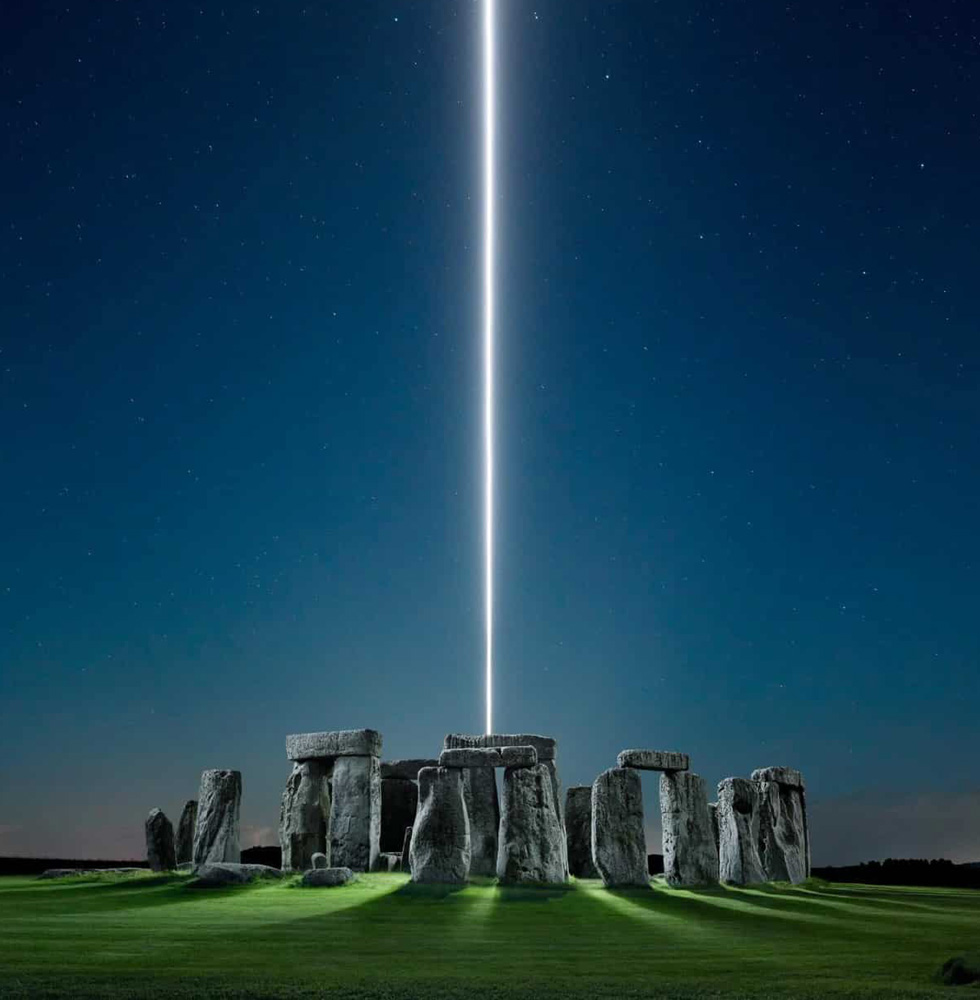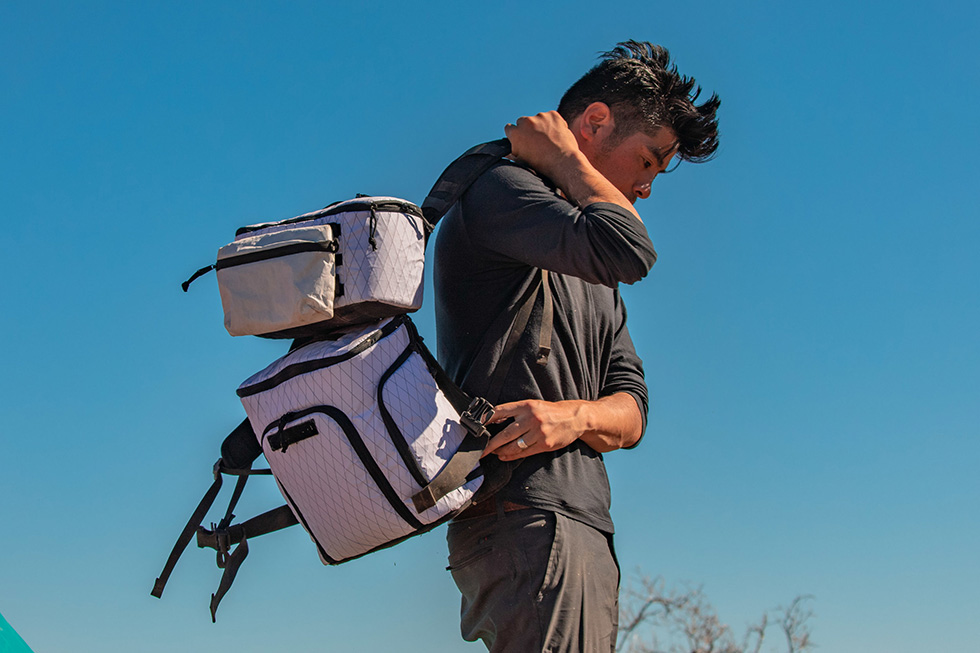Reuben Wu, a National Geographic photographer and artist, has wandered across the earth more than most, driven by a relentless urge to see things differently. His work has been called ‘otherworldly,’ sparking whispers of alien landscapes, but it’s simpler than that. He’s just trying to see nature anew, to celebrate its raw beauty, and maybe, just maybe, he’ll get us to look at it differently too.
His signature work with drones and aerial lighting has captured imaginations, weaving through the cultural moment like a shimmering thread in the dark. He calls himself an ‘artist working as a photographer,’ but that barely scratches the surface. He’s shed layers, evolved, and now stands as a force in contemporary photography. His journey? It’s nothing short of extraordinary.

Beginnings
As a boy, Reuben grew up in the industrial grit of Liverpool, England. The gray skies, the docks—there wasn’t much beauty there. But just beyond the city’s gloom, the wild called to him. The Lake District, North Wales, the Yorkshire Dales—three national parks that became his refuge. “Liverpool is industrial,” Wu remembers, “but those places were just a 40-minute drive away.” He escaped into them, camping and hiking with his parents, and that’s where his love for the outdoors took root.
Those childhood outings weren’t just pastimes; they shaped him. “I grew up outdoors,” he says. “That’s where my passion was born—in nature, in solitude. Hiking, camping—that’s where I find peace, where I’m truly myself. There’s a freedom out there, a silence that you can’t find in the world of men. It’s a different kind of living.”
Art and Design (and Ladytron)
As a young man, Wu’s path wavered between disciplines, searching for its true direction. In his late teens, he chose industrial design for college, not because he loved it, but because they told him art wouldn’t pay the bills. He dabbled in black-and-white photography, but the bleak industrial sprawl of Sheffield left him cold. “I decided I didn’t like photography,” he says, almost dismissively.
But that early judgment didn’t mean he was lost. Industrial design suited his curiosity about objects, their forms, and their functions. “I’ve always been fascinated by how things look and work,” he says. He spent years in consultancies, earned patents, and dug deep into the mechanics of design. Yet, his creative spirit couldn’t be confined. In his twenties, he veered into electronic music, DJing, and forming a band—Ladytron—with a friend in Liverpool.
The band took off. Singles hit big, deals were signed in LA, and Wu stood at a crossroads: stay in industrial design or hit the road with the band. He chose the road, and for nearly a decade, he lived the life most only dream of, touring the world. But the gigs blurred together, and the road became a loop. So Wu picked up a camera again, this time to capture the world he was moving through.
“I was traveling to these wild places, places few had seen. They sparked something in me, something I couldn’t ignore. So I started practicing, experimenting with film and old cameras.”
The rhythm of travel and photography became intertwined, peaking in a solo journey to Svalbard, Norway, in 2011. It was his first real photography adventure, separate from the band. In Svalbard—a land of icy peaks, fjords, and a sun that refused to rise—Wu created his first cohesive body of work. It became the turning point. The band went on hiatus, and Wu, camera in hand, never looked back.


New Dimensions
But how did Wu move from Svalbard to the signature style that now defines him? It started with a switch to DSLR. “I was drawn to long-exposure photography,” he says, “trying to push the camera beyond what the eye can see. Long exposures reveal a different dimension of the world.” He was also experimenting with time-lapse and picked up a digital camera to explore video. One night in the California desert, while capturing a time-lapse of the Trona Pinnacles, a pickup truck drove in, headlights blazing. It was 2:00 a.m., a peaceful night shattered by light. At first, he was furious, thinking his time-lapse was ruined. But later, when he reviewed the footage, something clicked. The artificial light had transformed the scene, altering the mood in a way he hadn’t anticipated.
Wu realized the power of artificial lighting in landscapes, especially at night. “Landscape photography often relies on the sun or the moon,” he explains, “which limits you. The idea of using artificial light in unexpected places intrigued me.” He started experimenting with drones, not for pictures, but as flying sources of light. “Drones aren’t great in low light, so I attached a light to one. Flying it through the darkness, casting light where you wouldn’t expect it, created a jarring effect. I could control the light in a way that conventional landscape photographers couldn’t. I was creating my own lighting, my own mood, rather than waiting for it to happen.”


Through this experimentation, Wu began to carve light into his landscapes, etching luminous lines that transformed natural scenes into something ethereal, otherworldly. These images captivated the public imagination, and in 2022, his work on Stonehenge landed him the cover of National Geographic.
Reuben Wu’s journey is a testament to an artist’s restless spirit, one that refuses to settle for the ordinary. From the industrial heart of Liverpool to the pulsating rhythms of Ladytron, and finally to the vast horizons of his photographic work, Wu has always sought to transcend the limits of his environment.
And his journey hasn’t been confined to art alone. In 2019, he returned to design, collaborating with Mark Falvai of Mission Workshop on the (unreleased) ARCA LUX camera bag. It wasn’t just a backpack; it was a vessel for exploration, perfectly suited for adventures like his own. This project merged his love for design and art, a symbol of his relentless pursuit to see the world in new ways.
His work, with its luminous creativity, reminds us that art often emerges where passion meets precision. And isn’t that something we’re all chasing, in one way or another? I’d like to think so.
















